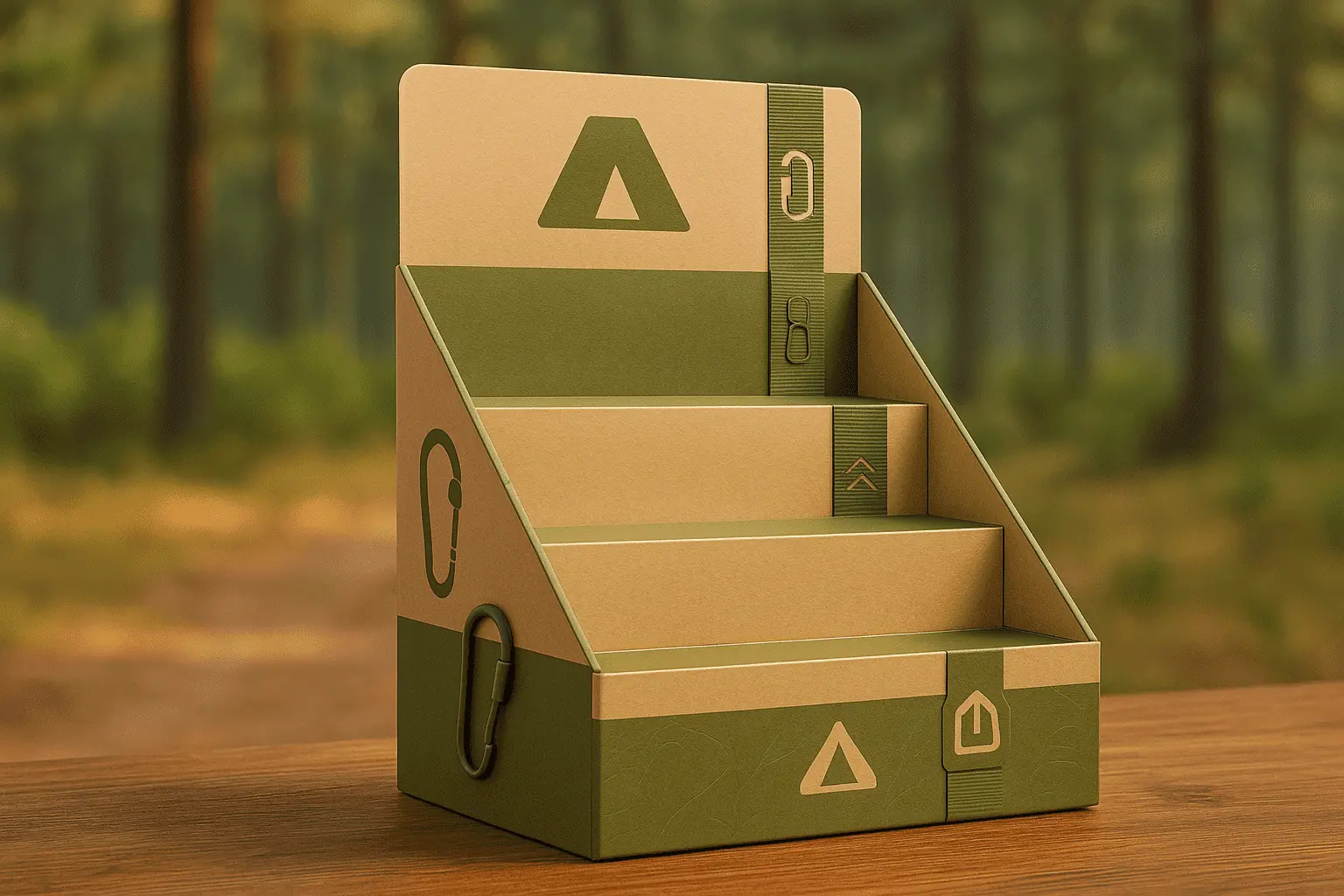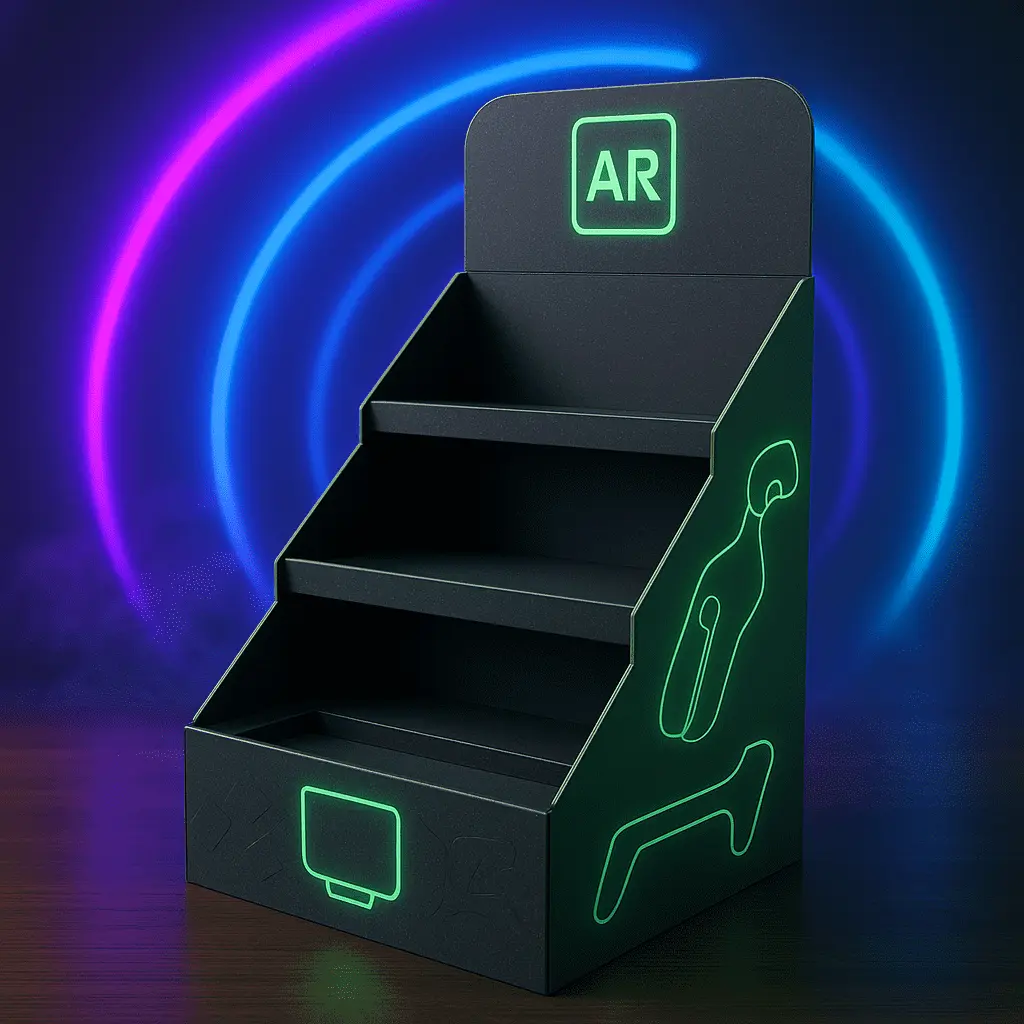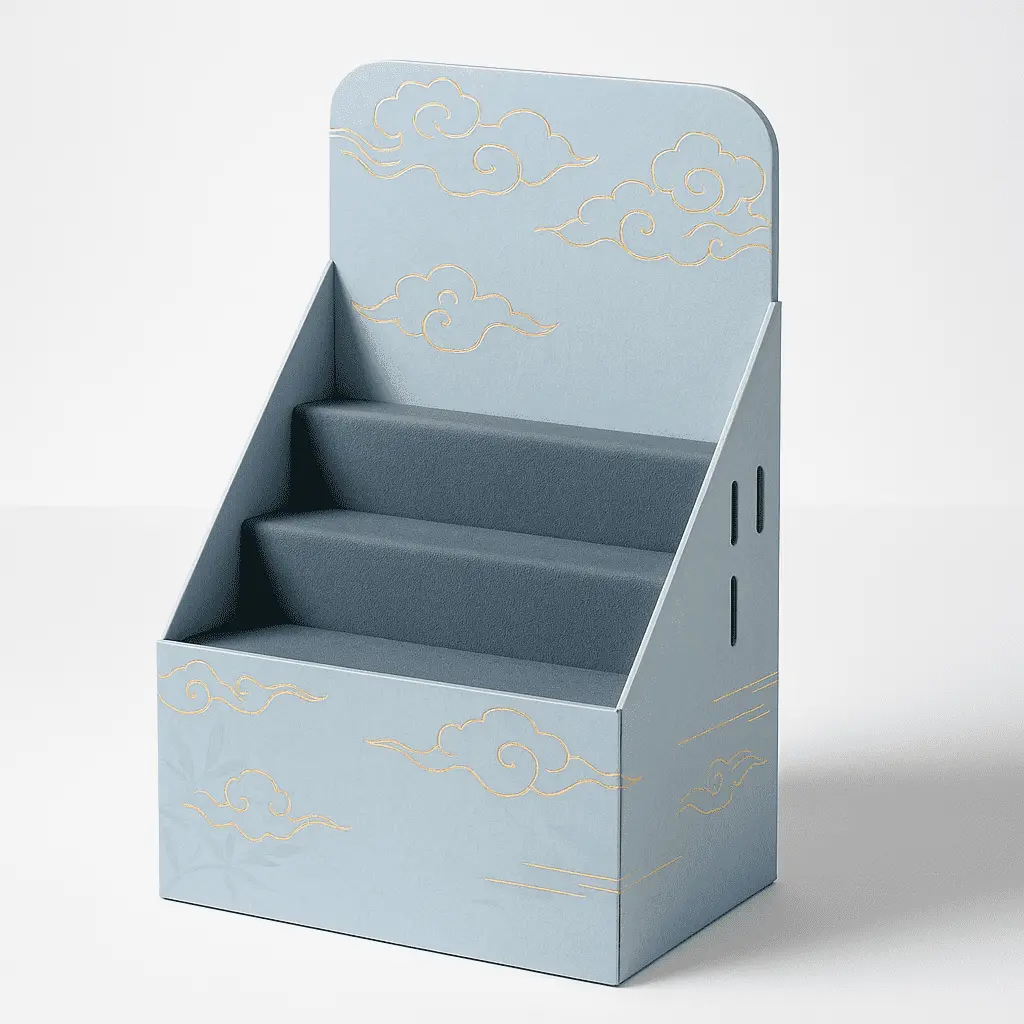The Anatomy of PDQ Displays: Design and Structure
Components and Materials
PDQ displays are constructed using a combination of lightweight yet durable materials to balance cost-effectiveness with structural performance. Corrugated cardboard remains the most widely used due to its recyclability, affordability, and strength. Paperboard is ideal for smaller, lightweight products, while plastic and metal reinforcements are used for displays requiring extended durability or heavier merchandise. The outer surfaces are typically printed using high-resolution lithographic or flexographic techniques to ensure vibrant, brand-consistent visuals that attract customer attention in retail environments.
Customization Options
The design flexibility of PDQ displays is a major advantage for retailers and marketers alike. Customization allows the display to perfectly fit the product’s size, shape, and branding requirements. From custom die-cut shapes and perforations to built-in product compartments and angled shelves, nearly every element can be tailored. Manufacturers can also incorporate branding elements like logos, colors, and promotional graphics. Multi-tiered layouts and compartmentalized designs improve organization and product visibility, helping to increase customer engagement and encourage impulse purchases at the point of sale.
Structural Integrity
Though PDQ displays are typically used for temporary promotions, their design emphasizes strength and reliability. Engineers focus on distributing product weight evenly through reinforced base panels, corner supports, and carefully planned load-bearing zones. This ensures that even in high-traffic retail spaces, the display remains stable and upright. Some PDQ units include locking tabs or interlocking parts for secure assembly. Modular construction is also common, allowing for flat-packing during shipping and easy setup in-store, making these displays both practical and cost-efficient for short-term retail campaigns.
Strategic Placement and Marketing Impact
Optimal Locations in Retail Spaces
The strategic placement of PDQ displays significantly influences their effectiveness in driving sales and consumer interaction. High-traffic zones such as store entrances, near checkout counters, and end-cap aisles are optimal locations that naturally attract customer attention. Placing PDQ units in these areas encourages impulse purchases by offering convenient access to featured products. Retailers can also enhance sales through cross-merchandising by situating complementary products nearby, thereby increasing the average transaction size and improving the overall shopping experience.
Visual Merchandising Techniques
PDQ displays utilize sophisticated visual merchandising strategies to attract customers and guide purchase decisions. Positioning products at eye level increases visibility and encourages engagement. Color psychology is strategically applied to evoke emotions and align with branding messages - warm colors for urgency, cool tones for trust. Clear fonts, striking visuals, and concise messaging enhance the display’s appeal and make product information accessible. Some advanced displays even integrate motion, lighting, or digital screens to create dynamic interactions and memorable customer experiences.
Brand Consistency and Recognition
PDQ displays play a vital role in reinforcing brand identity on the retail floor. By incorporating consistent brand elements - such as logos, signature colors, fonts, and taglines - these displays help strengthen consumer recognition and trust. A cohesive visual presence ensures that the display aligns with broader marketing campaigns, enhancing the brand's credibility. For emerging or niche brands, well-crafted PDQ units serve as impactful marketing tools that can elevate their presence, create familiarity with consumers, and compete effectively against more established labels in crowded retail environments.
Operational Efficiency and Retail Benefits
Inventory Management
PDQ displays enhance inventory management by streamlining the restocking process and improving on-shelf availability. Since many PDQ units arrive pre-packed with products, store employees can quickly place them on the floor without needing to individually stock each item. This saves both time and labor, particularly in high-volume retail environments. The open design of many displays allows for quick visual checks of inventory levels, enabling prompt reordering. As a result, retailers can better manage supply levels, avoid stockouts, and maintain a consistent shopping experience.
Cost-Effectiveness
PDQ displays provide a highly economical solution for in-store marketing and merchandising. Their ready-to-deploy format minimizes setup time and labor costs, allowing employees to focus on other operational tasks. These temporary displays eliminate the need for expensive, permanent fixtures while still delivering strong visual impact. Retailers can easily rotate displays to align with new promotions or seasonal campaigns without incurring additional construction or design expenses. This adaptability makes PDQ displays a smart investment for brands seeking to boost exposure without overextending their marketing budgets.
Data Collection and Analysis
Modern PDQ displays can be equipped with technologies like QR codes, RFID tags, or integrated sensors to facilitate data tracking. These tools collect real-time information on consumer interactions, such as dwell time, product engagement, and sales performance. By aggregating and analyzing this data, retailers can evaluate which displays drive the most interest and identify customer preferences. This intelligence supports more informed decisions on product placement, pricing strategies, and future display designs, making the overall marketing approach more targeted, efficient, and responsive to shopper behavior.
Conclusion
PDQ Point of Purchase Displays have revolutionized retail marketing by offering a dynamic, efficient, and impactful way to showcase products at the point of sale. Their strategic design, versatile placement options, and operational benefits make them an indispensable tool for both retailers and brands. As consumer behavior continues to evolve, PDQ displays adapt, incorporating new technologies and design elements to maintain their effectiveness in driving sales and enhancing the shopping experience. The future of PDQ displays looks promising, with potential innovations in sustainability, interactivity, and personalization on the horizon.
Contact Us
Ready to elevate your brand's presence with custom PDQ displays? Our team of expert designers and packaging engineers are here to bring your vision to life. Contact us today at support@fetchingprinting.com to discuss how we can create tailored PDQ display solutions that will make your products stand out in any retail environment.





